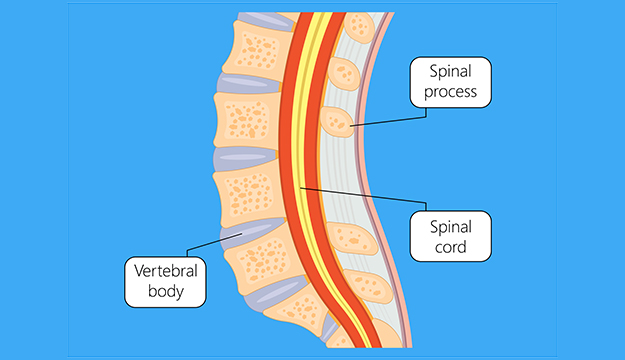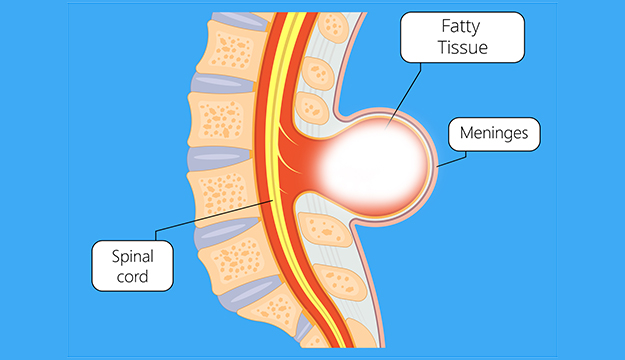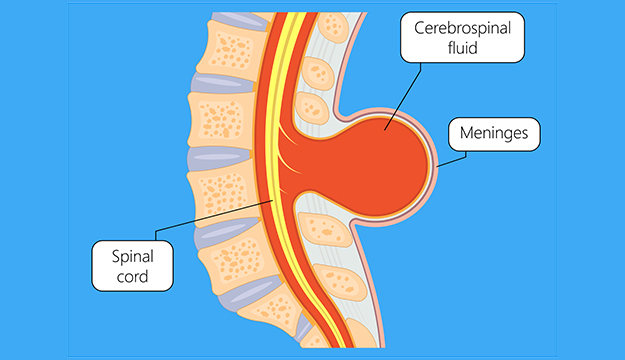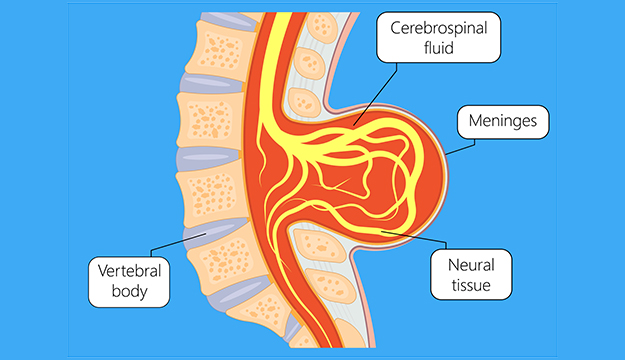Hydrocephalus which is the excess accumulation of cerebrospinal fluid (CSF), affects more than 85% of people with spina bifida. can cause serious damage to the brain impacting its ability to function.
Tethered Cord Syndrome which may cause bladder changes (increased urgency and frequency and urinary wetness, urinary infections), bowel changes (urgency and frequency in bowel soiling, changes in stool consistency), back pain, leg and/or foot changes and, scoliosis.
Chiari II Malformation which may cause a small percentage of people to experience aspiration (food and liquid entering the lungs), apnea (stop breathing for more than 5 to 10 seconds), hypersensitivity to objects in the mouth, light and loud sounds, gagging, choking, vomiting, stridor, tightness and/or weakness of arms, arching of head backwards, and/or a weak suck when using a bottle in breast-feeding babies. Most individuals with myelomeningocele have Chiari II Malformation.





